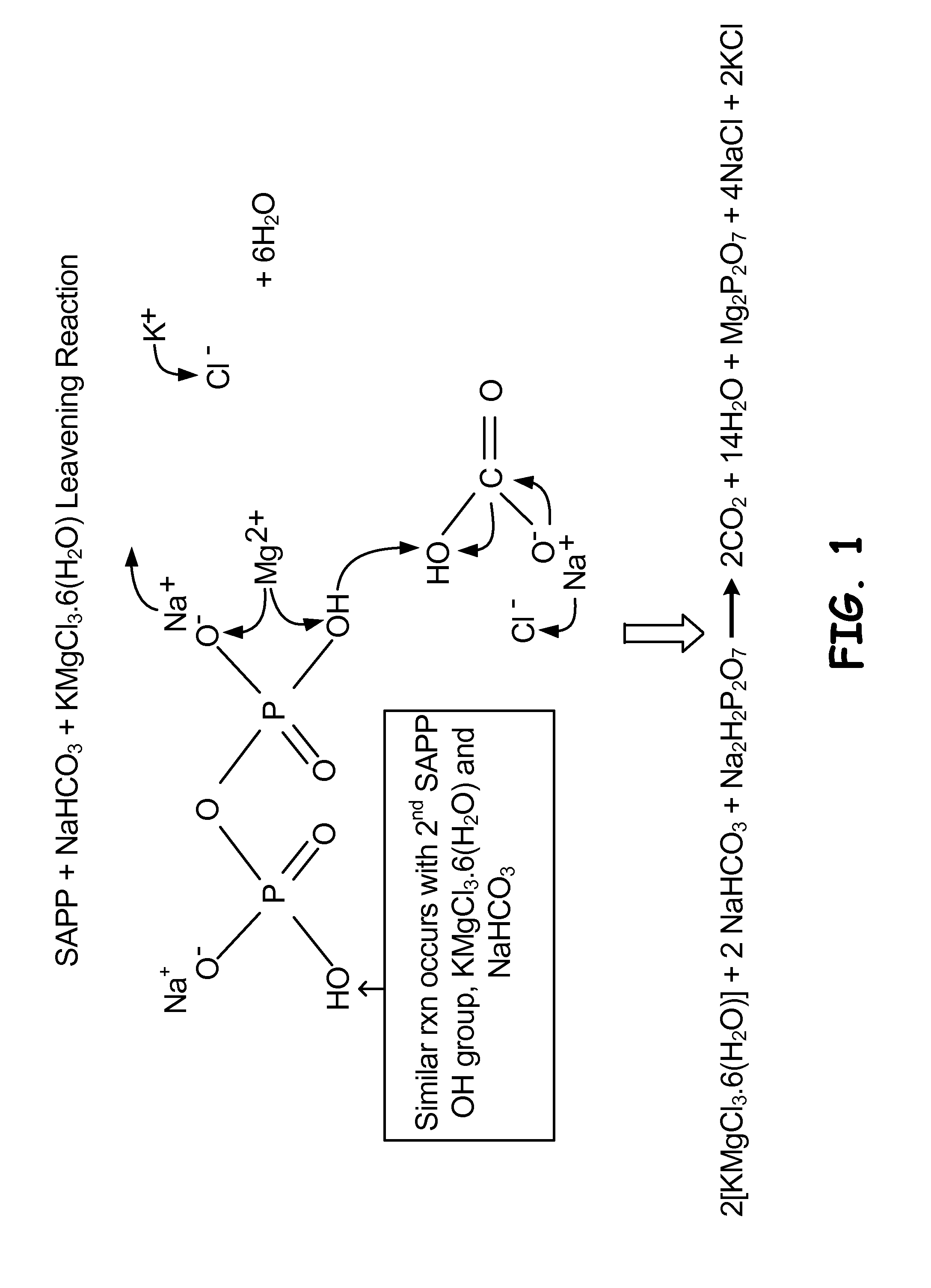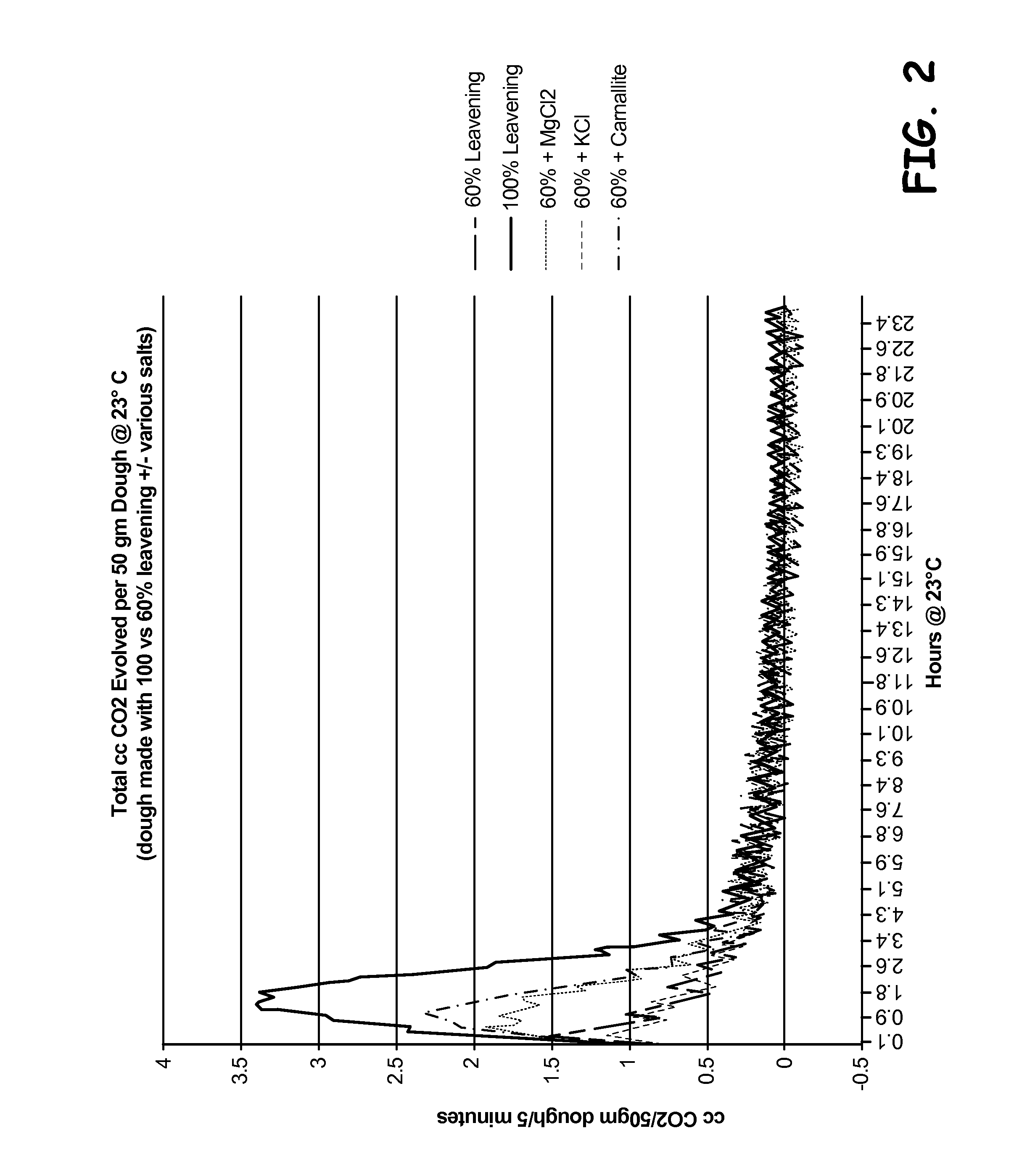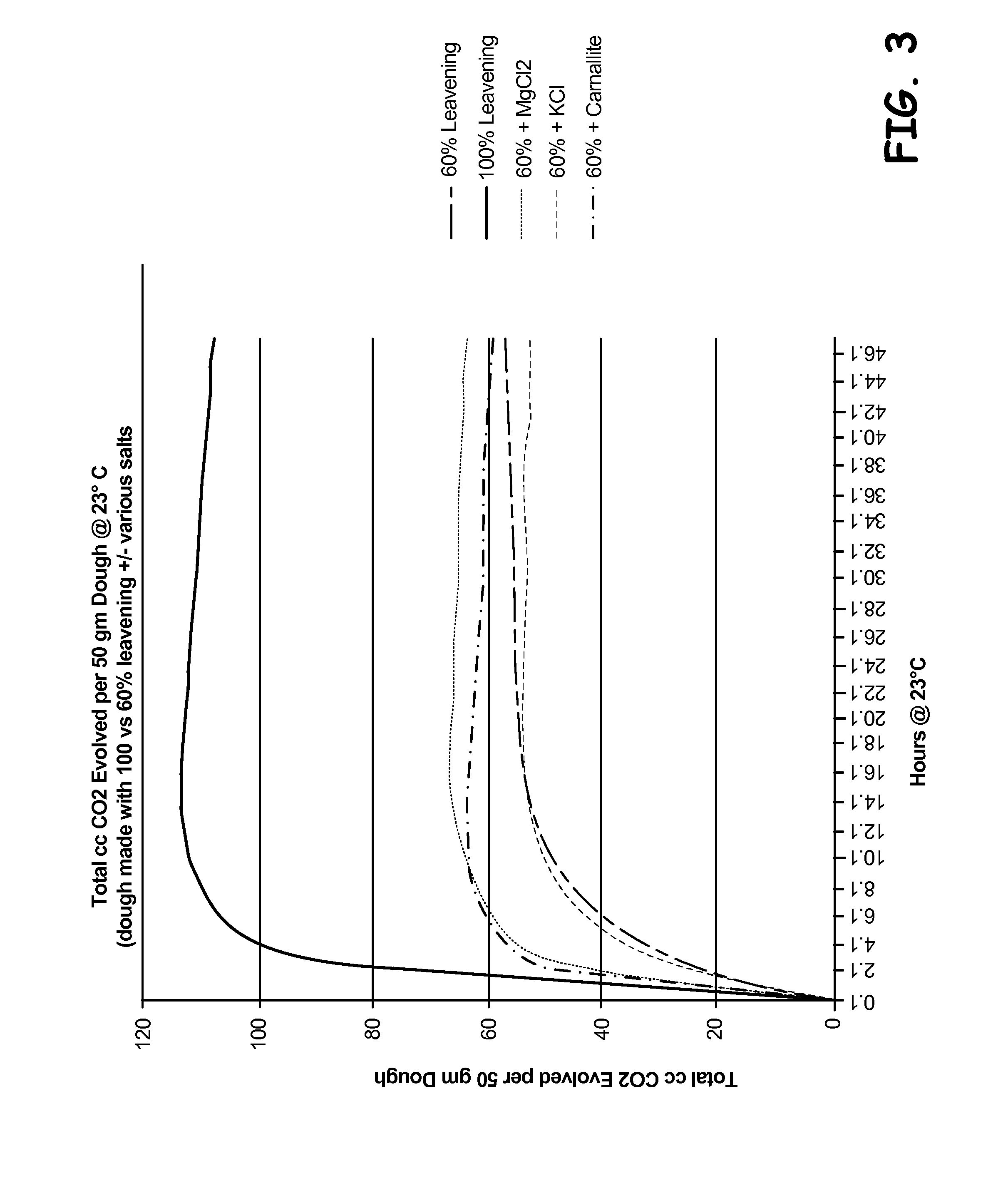Method and system for regulating leavening reactions
a technology of leavening and reaction, applied in the field of method and system for regulating leavening reaction, to achieve the effects of reducing the electronegatvity, and reducing the rate of carbon dioxide generation
- Summary
- Abstract
- Description
- Claims
- Application Information
AI Technical Summary
Benefits of technology
Problems solved by technology
Method used
Image
Examples
example 1
Effects of Added Salts and Reduced Leavening Agents
[0036]A control dough was prepared using flour, water, fat, leavening agents, salt, and other ingredients as shown in Table 1. A reduced-leavener test dough was prepared, having about 40% less leavening agents than the control dough, in other words, 60% of the leavening agents used in the control dough, and optionally an added source of an alternate counter ion, as shown in Table 1. The alternate counter ion was selected from the group of magnesium chloride, potassium chloride, and carnallite.
TABLE 1100%Leavened60% Leavened60% Leavened TestControlTest DoughDough With AddedIngredientFormulaFormulaCounter IonFlour 50% 51% 50%Water 27% 27% 27%Fat12.68% 12.70% 12.70% Sugar 6% 6% 6%Minor Ingredients1.30%1.31%1.31%SAPP1.12%0.67%0.67%SALP0.17%0.10%0.10%NaCl1.29%0.80%0.80%Sodium0.97%0.58%0.58%BicarbonateAlternate 0% 0%0.50%Counter Ion
[0037]50 g samples of each dough were prepared, and the amount of carbon dioxide generated over time at...
example 2
Carnallite in Low Leavener Dough Products
[0039]As described above, it is believed that alternate counter ions from carnallite facilitate the dissociation of the leavening acid salts, resulting in an accelerated reaction rate as compared to the reaction rate of the leavening agents without carnallite.
[0040]Various aspects of this unexpected leavening reaction rate acceleration were evaluated. The effects of reducing the overall leavening level of a dough containing a sodium acid pyrophosphate / sodium aluminum phosphate / sodium bicarbonate leavening system, and including carnallite to accelerate the reaction rate in this reduced leavening system, were measured. Dough was prepared by combining about 52% flour, 28% water, 9.3% fat, 6% sugar, 1.3% minor ingredients and the leavening agents and carnallite at the levels shown in Table 2a. The dough was then canned and the cans were closed. The canned dough was then proofed at about 70° F. (ambient) for 24 hours, and the can pressures were me...
example 3
Carnallite as a Leavening Reaction Accelerant
[0046]The effect of carnallite was further studied to identify under what conditions this source of alternate counter ions has its greatest effect on canned dough products.
[0047]Table 3 shows the effects of adding carnallite to full-sodium and reduced-sodium leavened dough products. Dough was prepared, packaged and proofed as described in Example 1. Can pressure was measured at about 3-5 hours after canning the dough, and then again at about 24 hours after canning
TABLE 3Early PSI and 24 Hour PSI ResultsLeaveningEarlyLevelPSI24(notSodium(hoursHourweightSAPPSALPBicarbonateCarnalliteNaClafterFinalTreatmentpercent)wt-%wt-%wt-%wt-%wt-%canning)PSIControl100%1.1220.1730.9701.305.4psi19.3(4.5hr)T280%0.8980.1380.77601.3011.7psi14.7(3.5hr)T380%0.8980.1380.7760.51.3012.3psi15.2(3.5hr)T480%0.8980.1380.7760.20.657.4psi14.0(3hr)T580%0.8980.1380.7760.50.658.1psi14.3(2.5hr)
[0048]The Early PSI pressure column shows that the Control had the lowest pressure...
PUM
 Login to View More
Login to View More Abstract
Description
Claims
Application Information
 Login to View More
Login to View More - R&D
- Intellectual Property
- Life Sciences
- Materials
- Tech Scout
- Unparalleled Data Quality
- Higher Quality Content
- 60% Fewer Hallucinations
Browse by: Latest US Patents, China's latest patents, Technical Efficacy Thesaurus, Application Domain, Technology Topic, Popular Technical Reports.
© 2025 PatSnap. All rights reserved.Legal|Privacy policy|Modern Slavery Act Transparency Statement|Sitemap|About US| Contact US: help@patsnap.com



